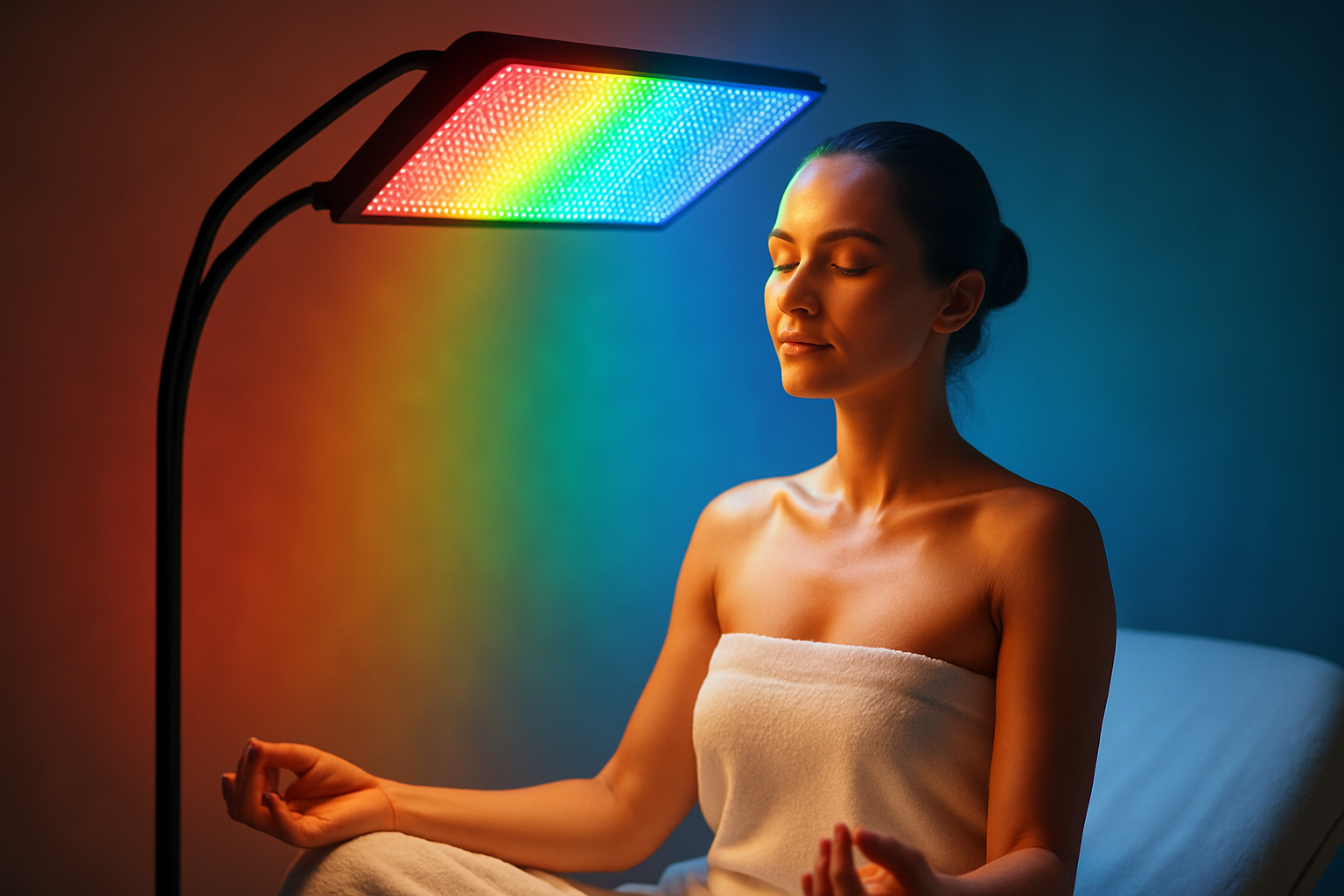Chromotherapy: Color's Hidden Influence on Wellness
The vibrant world of chromotherapy is gaining traction in the beauty and wellness industry, offering a fresh perspective on how color can impact our physical and emotional well-being. This ancient practice, also known as color therapy, harnesses the power of specific light wavelengths to promote healing and balance. As more spas and wellness centers incorporate chromotherapy into their treatments, it's becoming clear that this once-niche approach is poised to revolutionize how we think about self-care and rejuvenation. From its historical roots to cutting-edge applications, chromotherapy is painting a new picture of holistic wellness that's both scientifically intriguing and aesthetically appealing.

During the Islamic Golden Age, notable scholars like Avicenna explored the psychological and physiological effects of color. However, it wasn’t until the 19th century that modern chromotherapy began to take shape. Dr. Edwin Babbitt’s seminal work, “The Principles of Light and Color,” published in 1878, laid the groundwork for contemporary color therapy practices.
The Science Behind Chromotherapy
While skeptics may dismiss chromotherapy as pseudoscience, recent research has begun to shed light on the biological mechanisms at play. The human body’s circadian rhythms are heavily influenced by light exposure, and different colors of light can trigger various physiological responses.
For instance, blue light has been shown to suppress melatonin production, potentially affecting sleep patterns. Conversely, red light therapy has gained attention for its potential to stimulate collagen production and reduce inflammation. These findings have sparked interest in the medical community, leading to further studies on the therapeutic applications of specific light wavelengths.
Applications in Modern Wellness Practices
The beauty and wellness industry has embraced chromotherapy, incorporating it into a wide range of treatments and products. Innovative spa treatments now feature color-changing LED light therapy beds, where clients are bathed in different hues to address specific concerns such as stress reduction, skin rejuvenation, or energy boosting.
Some high-end skincare devices have also integrated chromotherapy principles, offering at-home light therapy treatments. These devices claim to target issues like acne, fine lines, and hyperpigmentation by emitting specific colors of light.
Chromotherapy in Interior Design and Architecture
The influence of chromotherapy extends beyond traditional wellness spaces. Interior designers and architects are increasingly considering the psychological impact of color when creating environments. This approach, sometimes called “healing architecture,” aims to promote well-being through thoughtful color selection in hospitals, workplaces, and homes.
For example, some hospitals are moving away from stark white interiors, opting instead for calming blues and greens in patient rooms to reduce stress and promote healing. Similarly, office spaces are being redesigned with color psychology in mind, using energizing hues in brainstorming areas and soothing tones in relaxation zones.
Chromotherapy and Mental Health
As awareness of mental health issues grows, chromotherapy is being explored as a complementary treatment for mood disorders. Some therapists are incorporating color into their practices, using colored lights or even virtual reality environments to create immersive, mood-altering experiences.
While more research is needed to fully understand the impact of color on mental health, preliminary studies suggest that exposure to certain hues may help alleviate symptoms of depression and anxiety. This has led to the development of light therapy lamps specifically designed to combat seasonal affective disorder (SAD).
Challenges and Controversies
Despite its growing popularity, chromotherapy faces several challenges in gaining widespread acceptance. The lack of standardized practices and limited large-scale clinical trials have led some in the medical community to question its efficacy. Critics argue that any perceived benefits may be due to the placebo effect rather than the direct impact of color exposure.
Additionally, there are concerns about the potential misuse or overuse of chromotherapy, particularly when it comes to at-home devices. Without proper guidance, users may not achieve the desired results or could potentially experience adverse effects from improper use of light therapy tools.
The Future of Chromotherapy
As research in the field of photobiomodulation (the use of light to stimulate biological processes) advances, chromotherapy is likely to evolve and gain more scientific credibility. The integration of artificial intelligence and personalized medicine may lead to more targeted and effective color therapy treatments tailored to individual needs.
Furthermore, the growing interest in non-invasive, holistic approaches to wellness suggests that chromotherapy will continue to find a receptive audience. As the lines between beauty, technology, and wellness blur, we can expect to see more innovative applications of color therapy in our daily lives.
In conclusion, chromotherapy represents a fascinating intersection of ancient wisdom and modern science in the pursuit of wellness. While questions remain about its efficacy and mechanisms, the growing body of research and its increasing adoption in various industries indicate that color therapy is more than just a passing trend. As we continue to explore the complex relationship between light, color, and human health, chromotherapy may well paint a brighter future for holistic wellness practices.





